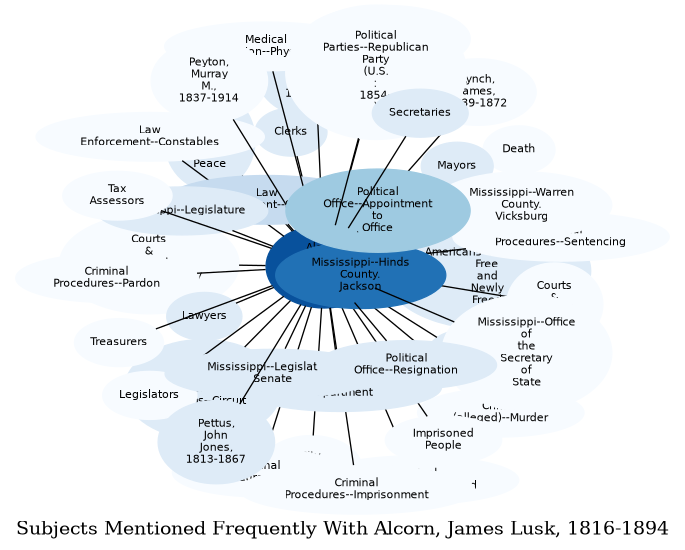Description
Related Subjects

The graph displays the other subjects mentioned on the same pages as the subject "Alcorn, J. L. (James Lusk), 1816-1894". If the same subject occurs on a page with "Alcorn, J. L. (James Lusk), 1816-1894" more than once, it appears closer to "Alcorn, J. L. (James Lusk), 1816-1894" on the graph, and is colored in a darker shade. The closer a subject is to the center, the more "related" the subjects are.